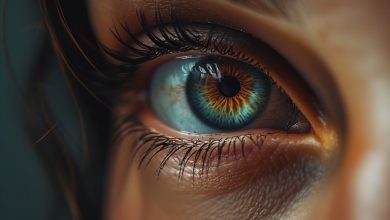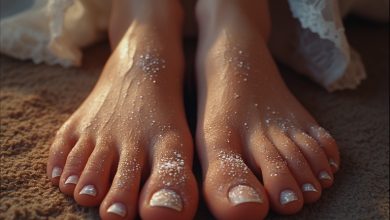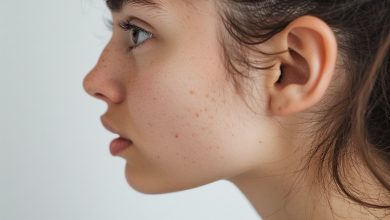

The holiday season brings joy, warmth, and festivities—but for some, it can also bring an unexpected skin irritation known as Christmas Tree Rash. If you’ve ever felt the annoying itch or noticed red patches after decorating your tree, you’re not alone. Whether it’s from tree sap, mold, or dust, this condition can turn holiday cheer into discomfort. But don’t worry! In this guide, we’ll show you the ultimate ways to treat and prevent Christmas Tree Rash, so you can enjoy the season without the skin irritation.
What is Christmas Tree Rash?
Christmas Tree Rash, also known as Christmas Tree Dermatitis, is a skin reaction that occurs when your skin comes in contact with certain allergens or irritants found on Christmas trees. Symptoms typically include red patches, bumps, and itching on the skin, especially in areas where you’ve had direct contact with the tree. While this condition isn’t dangerous, it can be uncomfortable and frustrating.
Common Causes of Christmas Tree Rash
- Tree Sap and Resin: The most common culprit, sap and resin can cause irritation and allergic reactions, especially for those with sensitive skin.
- Mold and Mildew: Christmas trees, particularly those stored in damp environments, can harbor mold or mildew, leading to allergic reactions.
- Dust and Pollen: Even if your tree is mold-free, dust and pollen can trigger rashes in sensitive individuals.
- Chemical Residues: Some trees may be sprayed with pesticides or other chemicals that can irritate your skin.
Symptoms of Christmas Tree Rash
Recognizing the symptoms early can help you take swift action to treat it. Look out for these common signs:
- Redness and Swelling: A telltale sign of irritation, especially where the tree’s branches or sap have touched.
- Itching and Burning: The most common symptom that can lead to constant scratching.
- Rash or Bumps: Raised bumps or rashes that may appear within hours of exposure.
- Dry, Flaky Skin: In severe cases, the rash may dry out and peel.
7 Proven Ways to Treat and Prevent Christmas Tree Rash
1. Wash Your Skin Immediately After Contact
One of the most effective ways to reduce the chances of developing Christmas Tree Rash is to wash your skin as soon as possible after handling the tree. Use a gentle soap and lukewarm water to avoid further irritation.
Tip: For extra protection, you can apply a soothing aloe vera gel or an over-the-counter hydrocortisone cream to calm your skin after washing.
2. Wear Protective Gloves
If you’re decorating the tree or handling it, wearing gloves can create a barrier between your skin and the tree’s irritants. This simple precaution can significantly reduce the risk of a rash.
Pro Tip: Opt for latex or nitrile gloves, as these are commonly hypoallergenic and provide effective protection against tree sap.
3. Shower and Moisturize After Decorating
After handling the tree, a warm shower followed by moisturizing your skin is a great way to keep your skin hydrated and less prone to irritation. Choose a fragrance-free moisturizer to avoid additional irritation from chemicals or scents in lotions.
Bonus Tip: Look for a moisturizer with ceramides to strengthen the skin’s protective barrier.
4. Opt for a Pre-Decorated, Artificial Tree
If you’re particularly prone to Christmas Tree Rash, consider investing in a high-quality artificial tree. These trees eliminate most of the natural allergens, such as sap, mold, and pollen. Plus, they’re a great long-term investment!
5. Keep Your Tree in a Well-Ventilated Area
If you choose a real tree, place it in a well-ventilated area of your home to minimize the buildup of mold, mildew, or dust. Make sure to water the tree regularly to prevent it from drying out and releasing allergens into the air.
6. Use Anti-Inflammatory Creams
For those who do develop a rash, using an anti-inflammatory cream can help reduce swelling and itching. Look for creams containing hydrocortisone or calamine lotion to soothe the irritated skin. These can help you feel better fast and prevent the rash from worsening.
7. Consider Allergy Medications
In some cases, an over-the-counter antihistamine may be necessary to control the allergic response. These medications can help reduce the swelling, itching, and other symptoms associated with Christmas Tree Rash. Always consult with a healthcare professional before taking any medication.
How to Prevent Christmas Tree Rash Before It Starts
While it’s impossible to entirely eliminate the risk of a rash, there are several steps you can take to reduce the likelihood of developing this skin condition.
1. Pre-Treat Your Tree
Before bringing your Christmas tree into your home, you can pre-treat it by rinsing the tree with water to remove dust and allergens. If you’re particularly sensitive, consider applying a non-toxic tree sap remover to eliminate any potential irritants.
2. Create an Allergy-Free Zone
If you or someone in your family is highly sensitive to allergens, try to keep the Christmas tree in a designated area away from living spaces. This will limit direct exposure to the tree’s irritants.
3. Clean Your Home Regularly
Dust and mold can accumulate on the Christmas tree and spread to your home. Keep your living area clean by regularly dusting and vacuuming, especially if you have a real tree.
Frequently Asked Questions (FAQs)
Q1: Can Christmas Tree Rash affect children?
Yes, children can develop Christmas Tree Rash, especially if they are more sensitive to allergens. Always ensure that children wash their hands after touching the tree and avoid contact with the tree’s sap.
Q2: How long does Christmas Tree Rash last?
The duration of Christmas Tree Rash varies depending on the severity of the reaction. Mild cases may clear up within a few hours to a few days, while more severe reactions could last longer. Using anti-inflammatory creams can help speed up the healing process.
Q3: Are there natural remedies for treating Christmas Tree Rash?
Yes, natural remedies such as aloe vera, coconut oil, and chamomile compresses can help soothe irritated skin. These remedies are gentle and can offer relief without the harsh chemicals found in some over-the-counter treatments.
No one wants to experience skin irritation during the most wonderful time of the year. However, Christmas Tree Rash doesn’t have to ruin your holiday season! By following the tips and remedies outlined in this guide, you can easily treat and prevent the rash, ensuring that you stay comfortable while enjoying your tree decorating traditions.
If you’re still dealing with skin irritation, don’t hesitate to consult a dermatologist for further advice. Take action today—prevent, treat, and enjoy a rash-free holiday season! For more tips on skincare and seasonal health, subscribe to our blog and download our ultimate skincare guide.
Have you experienced Christmas Tree Rash before? Let us know in the comments below or share your own tips for avoiding skin irritation during the holidays!



